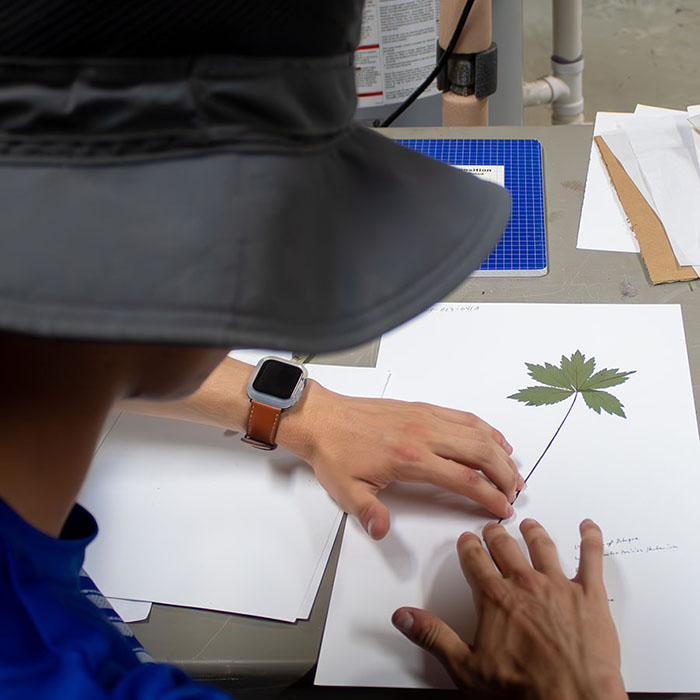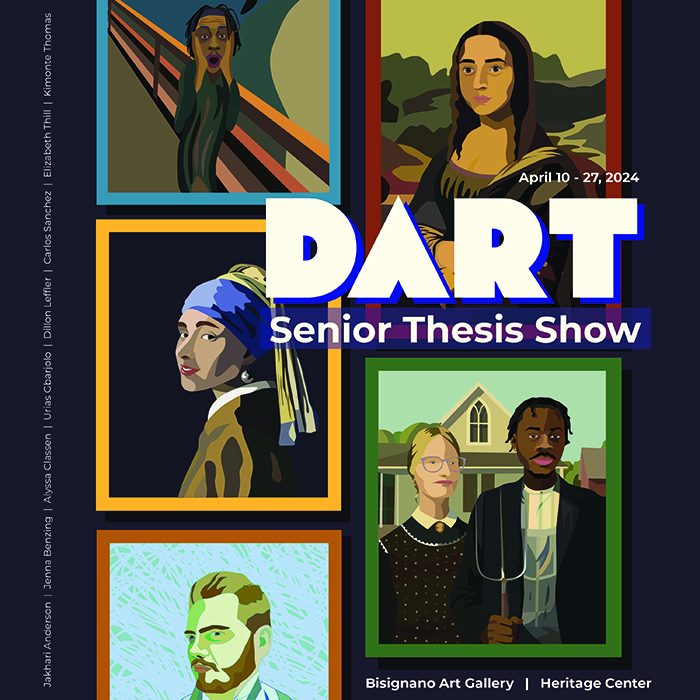Herbarium to be Established at Wolter Woods and Prairies
By Stacey Ortman
DUBUQUE, Iowa - David Koch, PhD, associate professor of environmental science at the University of Dubuque, is leading an exciting new project at Wolter Woods and Prairies Environmental Stewardship and Retreat Center that will establish an herbarium to create a permanent collection of the property's plant diversity.
"We want to make Wolter Woods and Prairies a research location and having this baseline information of what's there will help with future research," Koch said.
This summer was the start of a multi-year process to create an herbarium, which is a collection of dried plant specimens, at Wolter Woods and Prairies. Around 50 specimens have been collected so far with an anticipated 300 to 600 by the end of the year. The herbarium is expected to house a couple thousand specimens when the first phase of the project is completed in approximately five years.
"This year I will basically collect as much as I can, but I know there will be some things that I miss. Next year will be about trying to find some of the more difficult to find things. And then each year after that is finetuning and going for specific things that we are missing. For example, maybe this year I have a plant that is flowering and maybe next year I want to try to get a specimen of the plant before it's flowering so we can have both of those," Koch said.
Gerald Zuercher, PhD, director of Wolter Woods and Prairies, stressed the importance of establishing an herbarium to allow for long-term management of the property. The creation of a comprehensive list of the plant diversity will aid in monitoring the property over time in addition to research possibilities.
"As a scientist and ecologist, it's always good to have as much information and data as possible. It allows you to go back and look at any sort of changes that might happen over time. With this new herbarium at Wolter Woods and Prairies, people way down the road will have the opportunity to look at a specimen from their time and be able to look back and see what it looked like in the past to see if there were any changes in appearance or anything like that," Zuercher said.
Located on 121 acres of unglaciated land in northeast Iowa, Wolter Woods and Prairies is unique from its forests and prairies to lowlands near the Mississippi River and highlands on limestone bluffs. Thanks to generous investors, UD purchased the property in late 2020 after the previous owners, Mari and Gary Wolter, who had partnered with the Department of Natural and Applied Sciences, asked UD officials if they would be interested in becoming stewards of the property. Recently, the Wolters invested in the herbarium project.
"Gary and I want to thank Dr. Zuercher and Dr. Koch for their leadership on the plant survey and herbarium project. Photographing and identifying the flora and fauna of Wolter Woods and Prairies was a hobby that brought me a lot of joy over the years. I am thrilled that UD has taken on this challenging and important endeavor," Mari Wolter said.
Now, as a conservation management specialist volunteer at Wolter Woods and Prairies, she is able to continue to help on special projects such as the herbarium.
"It is not only important to protect the native plant life of Wolter Woods and Prairies but also to document the plants that exist for the historical record, particularly in this age of significant climate change. Wolter Woods and Prairies has unique and threatened species, including three orchid species and the Amethyst Shooting Star. Wild orchids, for example, can live for decades, but we don't know how climate change will impact these orchids. Someday, a botanist will have the opportunity to use the Wolter Woods and Prairies herbarium to research the effects of climate change and answer that question," Mari Wolter said.
Braydin Preston, a senior computer information technology and environmental science double major from Lanark, Illinois, is also helping on the herbarium as an advanced land management intern through the John and Alice Butler Summer Research Fellowship.
"For me, starting the herbarium has put into perspective how small life really gets in the natural world. When you're in the field collecting specimens, not only are you learning how to identify plants but you're also learning about the things that are around and coexisting with these plants. Seeing things you haven't seen before sparks curiosity and brings up a lot of questions which paves the way for learning," he said.
The process of an herbarium begins in the field with a plant press, camera, notebook, and more. Once a plant is found, it is photographed and GPS is used to denote its location. A sample is taken of the plant by cutting it off near the soil and placing it between newspapers and cardboard.
"We want to try to show the shape of the plant as well as you can in two dimensions," Koch said. "When I take the samples inside, I actually go through them again. Sometimes the leaves when they're outside are kind of curled up and it's hard to get them flat. So, when I take them inside, I pull those curled parts out and flatten them more and reset them," Koch said.
The specimens sit for a week or two to dry. Once dried, they are placed on acid-free cardstock with acid-free glue to ensure the samples don't deteriorate over time.
"It's mostly about keeping the integrity of the sample. The plants, if you put them on regular paper and you use regular glue, will decompose in 10 to 30 years because the acid breaks down the solids. If you use this special paper and special glue, they last longer," Koch said.
The specimens are then labeled with details such as species, genus, and family name as well as when and where the sample was located. For now, specimens are stored on shelf space at Wolter Woods and Prairies, but they will eventually be placed in special cabinets made for herbariums. A goal for a future phase of the herbarium is to create a digital database to allow anyone to look up digitally what has been found at Wolter Woods and Prairies.
"We have many goals for this project that we would like to roll out on a full scale once it is completed, but in order to do so, it's going to take a lot of work," Preston said, adding. "To be alongside Dr. Koch and to be one of the first to start and help with the project, I hope this is something that can be carried on for years to come so other students can learn the valuable skills that I am learning."



